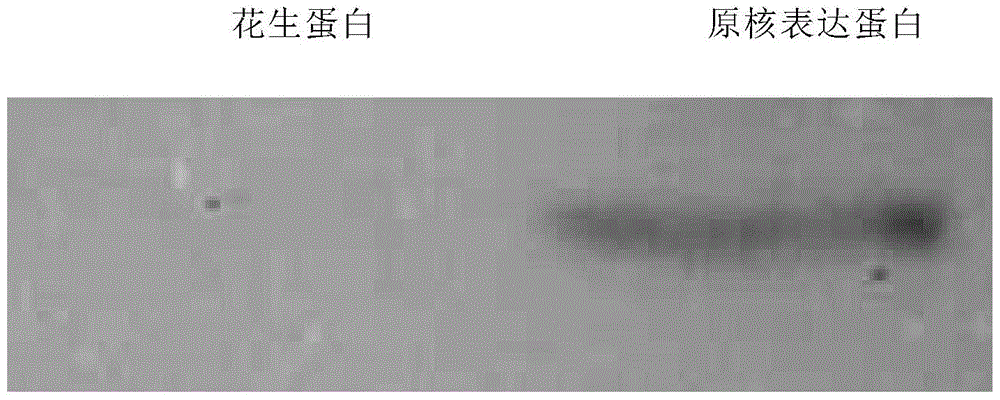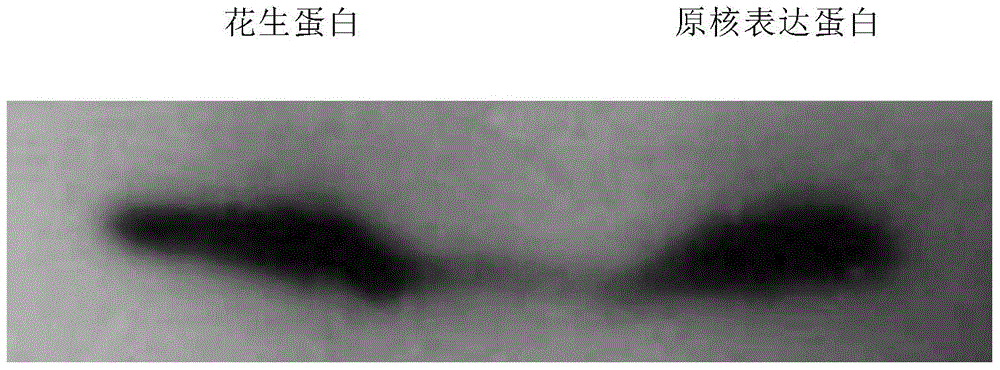Non-closed protein blotting method for quickly detecting low-abundance proteins
A Western blotting and protein technology, applied in the field of protein detection, can solve the problems of weak protein exposure and development, low sensitivity, poor effect, etc., to shorten the detection time, avoid diffusion or escape, and reduce losses.
- Summary
- Abstract
- Description
- Claims
- Application Information
AI Technical Summary
Problems solved by technology
Method used
Image
Examples
Embodiment 1
[0055] Improved detection of AhNCED protein by western blotting
[0056] Steps (1)-(3) are the same as the above comparative example.
[0057] (4) Carry out methanol treatment to the PVDF membrane that has transferred protein, the concrete method is to let described PVDF membrane soak in 100% methanol for 15s, then let the PVDF membrane treated by methanol carry out natural drying. There are two purposes of drying: to volatilize methanol to eliminate the influence of methanol on subsequent experimental steps; to dry the PVDF membrane to restore the hydrophobic properties of the PVDF membrane. In order not to affect the protein molecules fixed on the PVDF membrane, the PVDF membrane is preferably placed on filter paper to dry naturally.
[0058] Steps (5) and (6) are the same as the above comparative example.
[0059] The development result is as figure 2 As shown, the AhNCED protein in peanut leaves can be seen in the exposure image, but the expression intensity is not as ...
Embodiment 2
[0061] Improved detection of AhNCED protein by western blotting
[0062] Steps (1) to (4) are the same as in the first embodiment above.
[0063] (5) Add the primary antibody (that is, the antibody of the target protein) and incubate at room temperature for 1.5 h, and rinse with TBST washing solution twice, each time for 10 s. Add HRP-labeled secondary antibody (i.e. chromogenic marker) to bind primary antibody, incubate at room temperature for 1 hour, rinse with TBST washing solution twice, each 10s. The implementation of "rinsing" described here is different from the aforementioned "washing", specifically holding a corner of the PVDF membrane with tweezers and gently shaking it in the TBST washing solution in a small range.
[0064] (6) Develop and fix after tableting. This step is the same as the step (6) of the above comparative example.
[0065] The development result is as image 3 As shown, the exposure and development of AhNCED protein in peanut leaves is obvious, ...
PUM
 Login to View More
Login to View More Abstract
Description
Claims
Application Information
 Login to View More
Login to View More - R&D
- Intellectual Property
- Life Sciences
- Materials
- Tech Scout
- Unparalleled Data Quality
- Higher Quality Content
- 60% Fewer Hallucinations
Browse by: Latest US Patents, China's latest patents, Technical Efficacy Thesaurus, Application Domain, Technology Topic, Popular Technical Reports.
© 2025 PatSnap. All rights reserved.Legal|Privacy policy|Modern Slavery Act Transparency Statement|Sitemap|About US| Contact US: help@patsnap.com



